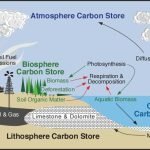How Are Igneous Rocks Formed?
Igneous rocks are one of the three main types of rocks, along with sedimentary and metamorphic rocks. They are formed when magma (molten rock) cools and solidifies, resulting in a wide range of textures and compositions.
The Formation Process
The process of igneous rock formation begins deep within the Earth’s mantle, where temperatures can reach up to 2,000°F (1,093°C). At these extreme conditions, minerals start to melt, forming magma. This molten material can be generated through various mechanisms, such as:
- Plate tectonics, where the movement of tectonic plates causes the Earth’s crust to stretch and thin, allowing magma to rise.
- Volcanic activity
- The interaction between rocks and water
As the magma rises towards the surface, it cools and solidifies, forming an igneous rock. The rate of cooling determines the texture and composition of the final product.
Intrusive Igneous Rocks
Intrusive igneous rocks, also known as plutonic rocks, are formed when magma cools slowly beneath the Earth’s surface. This process can take thousands to millions of years, allowing minerals to crystallize and form a coarse-grained texture.
- Examples include granite, diorite, and gabbro
- The slow cooling rate allows for the formation of large crystals, such as quartz and feldspar
Extrusive Igneous Rocks
Extrusive igneous rocks, also known as volcanic rocks, are formed when magma cools quickly at or near the Earth’s surface. This rapid cooling rate results in a fine-grained texture and the formation of small crystals.
- Examples include basalt, andesite, and obsidian
- The quick cooling rate allows for the formation of glassy minerals, such as obsidian
Characteristics of Igneous Rocks
Igneous rocks exhibit a range of characteristics that can be used to identify them. Some common features include:
- Aphanitic or porphyritic texture
- Composition rich in silicates, such as quartz and feldspar
- Precise mineral crystals, indicating rapid cooling
By understanding the formation process and characteristics of igneous rocks, geologists can gain insights into the Earth’s history, plate tectonics, and volcanic activity.
Conclusion
Igneous rock formation is a complex and fascinating process that has shaped our planet. By exploring the different mechanisms and textures involved in igneous rock formation, we can better appreciate the incredible diversity of rocks that make up our Earth.
References:
USGS: What is Magma?
USGS: Geologic Time
Score Big on Black Friday: Best Gaming Laptops 2021: Don’t miss out on the incredible deals and discounts on top gaming laptops this Black Friday. From budget-friendly options to high-performance machines, we’ve got you covered with our expert reviews and recommendations.
Get Your Game On: Best Gaming Headsets 2020: Take your gaming experience to the next level with a top-notch headset that delivers crystal-clear sound and immersive gameplay. Check out our expert reviews and ratings to find the perfect fit for your gaming style.






